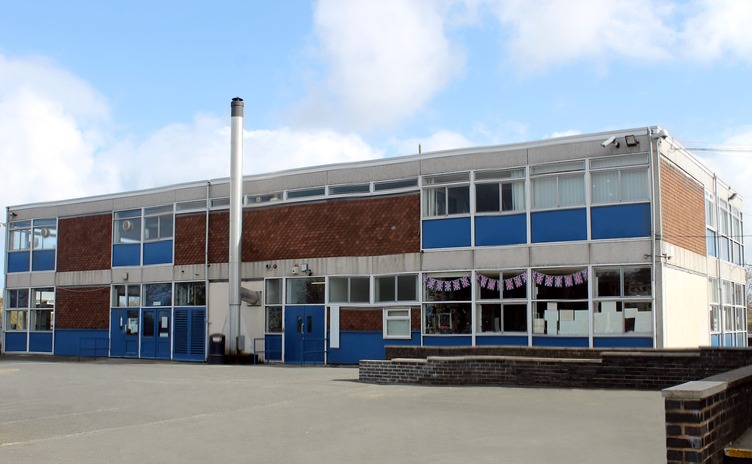
As reported by The Guardian, a report has revealed that 572 schools in England have been identified as being at possible risk of structural collapse, with many more unaware of danger of collapse posed by crumbling concrete
The Department for Education (DfE) has identified 572 schools so far where it believes reinforced autoclaved aerated concrete (RAAC), a building material that deteriorates over time and is susceptible to sudden failure, may have been used during construction.
RAAC has been confirmed in 65 schools after 196 surveys, of which 24 required emergency action, according to a report by the National Audit Office (NAO). The danger has been considered so great that a number of schools have had to close, either fully or partly, while others have required emergency propping up owing to fears of collapse.
The total number of school buildings at risk is expected to increase significantly, as the DfE does not yet have a full picture of the prevalence and condition of RAAC in schools. The dangers have, however, been apparent since a sudden roof collapse at a primary school in Gravesend, Kent, in 2018.
Earlier this month it was reported in Schools Week that the DfE had told four schools, in Essex and the north-east, to close after RAAC was found in their ceilings, with pupils being taught remotely or on alternative sites. The schools were named as Mistley Norman Church of England primary school and Hockley primary school, both in Essex, and two schools in the north-east run by the Bishop Bewick Catholic education trust.
RAAC, which is a lightweight form of concrete used in the construction of schools and other public buildings between the 1950s and mid-1990s, is seen as the greatest risk to safety across the ageing school estate in England. The DfE has assessed the possibility of a building collapse or failure causing death or injury as a “critical and very likely” risk since 2021. According to the NAO, it has not yet been able to reduce that risk.
More than a third (38%) of school buildings (24,000) are past their estimated design lifespan, according to the NAO, which reports that 700,000 children are being taught in schools that require major rebuilding or refurbishment programmes, where poor conditions are directly affecting pupil attainment and teacher retention.
Stephen Morgan, the shadow schools minister, said: “Labour has repeatedly raised the risk to life that school buildings pose to children and staff but have been met with a wall of silence from the Conservative government.
“Children won’t receive a first-class education in second rate buildings. It’s time for ministers to come clean and tell parents what they know about the state of school buildings and reassure them that children are being educated in buildings that are safe.”
The DfE is focusing on 14,900 schools built during the period when the use of RAAC was widespread in construction. Of these, 42% have confirmed they have undertaken work to identify RAAC, but potential risks are yet to be identified in the remaining schools.
“The DfE is working with the bodies responsible for all schools with RAAC to confirm that mitigations are in place to ensure pupil and staff safety,” the report says. “It has allocated £6m to undertake 600 assessments by December 2023.”
The report does not list the schools known to be affected by RAAC, but where there is a known problem headteachers will be aware, and that is likely to have been passed on to parents, especially if a school has closed as a result.
There are also concerns about 13,800 “system-built” blocks in schools – almost all containing asbestos – of which about 3,600 are thought to be susceptible to deterioration. The department has approved plans to assess 200 of these blocks but has yet to appoint specialists to carry out inspections.
Unison’s head of education, Mike Short, said: “Staff and pupils are spending the school day in buildings that could be on the verge of collapse. The government needs to get a grip before someone is injured or worse.”
Munira Wilson, the Liberal Democrat education spokesperson, said: “Parents have a right to know that their child is safe at school. Yet this report shows that hundreds of thousands of children are learning in crumbling school buildings. To make matters worse, the government is flying blind without a clue about how many schools pose a danger to our children.”
Natalie Perera, chief executive at the Education Policy Institute, described the findings as alarming. “Continued under-investment in school buildings and under-resourcing of urgent maintenance issues has led to possibly the highest risk the department has ever carried. Despite knowing about the risk of RAAC since 2018, still only a third of schools that are potentially affected by it have been investigated.
“It is inconceivable that the department is tolerating a risk that could ‘very likely’ cause death or serious injury to children and teachers.”
The DfE said the government was investing in 500 projects for new and refurbished school buildings and had allocated more than £15bn since 2015 for keeping schools safe and operational.
“It is the responsibility of those who run our schools – academy trusts, local authorities, and voluntary-aided school bodies – who speak to their schools’ day to day to manage the maintenance of their schools and to alert us if there is a concern with a building. We will always provide support on a case by case basis if we are alerted to a serious safety issue by these responsible bodies.”
Ministers have launched a UK government-wide inquiry into the use of crumbling concrete in public buildings, and every Whitehall department has been ordered to assign a civil servant to identify the use of RAAC across the £158bn government estate.




Be the first to comment